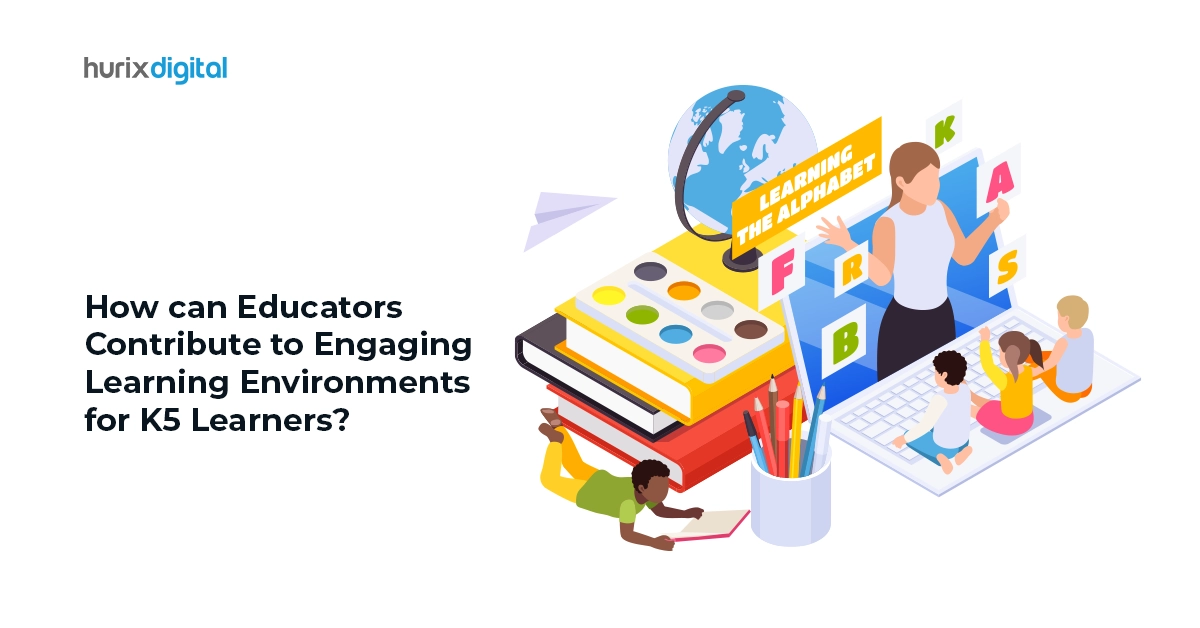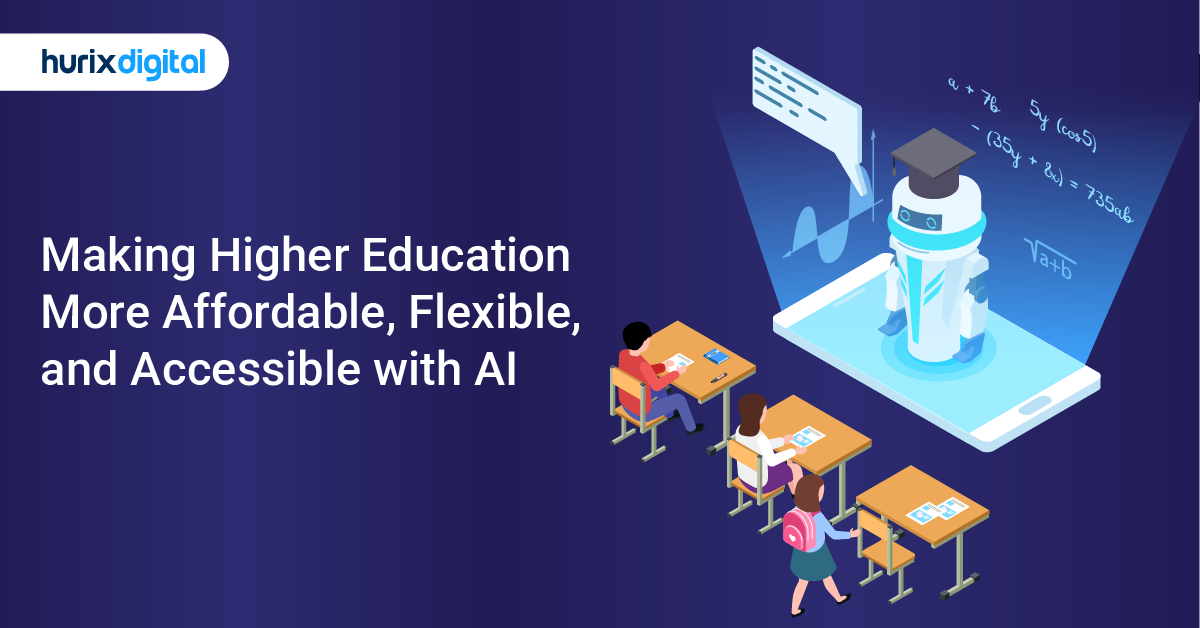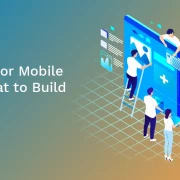
How can Educators Contribute to Engaging Learning Environments for K5 Learners?
Summary
This blog outlines enhancing K5 learning with technology and inclusive strategies for dynamic, interactive classrooms that elevate student engagement and success.
Engaging learning environments transform schools into vibrant spaces where students are excited and motivated to learn.
Educators can enhance K5 learning by utilizing various technology-driven classroom engagement techniques. When expertly implemented, inclusive strategies help students tackle real-life global challenges, retain knowledge, apply new skills, and learn through experience.
Research shows that engaged students remember more, think more critically, and enjoy school more. This further emphasizes the crucial role of dynamic and interactive learning environments in boosting student success.
Read on as we explore some key classroom management strategies educators can use in 2024.
Table of Contents:
- Why Should Educators Focus on Curriculum Design in K5 Learning?
- Steps to Follow to Create Engaging Learning Environments
- Key Elements of Engaging Classrooms
- Essential Tips for Maintaining Engagement
- Conclusion
Why Should Educators Focus on Curriculum Design in K5 Learning?
The first step to augmenting student-centered learning is to implement a well-designed curriculum that lays the foundation for a successful K5 Learning environment.
Here’s why educators should prioritize curriculum design:
1. Strong Foundation for Learning
A thoughtfully structured K5 Learning curriculum ensures that students are prepared for future learning, which ensures long-term academic success. It is all about enhancing skills and knowledge using inclusive classroom practices from one-grade level to the next.
2. Engaging Learning Environments
When a curriculum is designed after customizing and personalizing it according to the student’s interests, the pace of learning, and developmental stages, it keeps them engaged. Educators can introduce collaborative learning in K5 through project-based learning, simulation-based learning, and gamification.
3. Meeting Individual Needs
A future-oriented curriculum caters to the diverse needs of students and is based on different learning styles. Such a curriculum offers opportunities for advanced learners and provides extra support for those who need it. It helps educators focus on what students need to work on and effectively assess performances and learning outcomes.
4. Following Global Standards
Such a curriculum heeds global and national learning standards, ensuring students develop the essential skills and knowledge they need to succeed. For instance, incorporating STEM education, digital literacy, and critical thinking skills aligns with global educational benchmarks, preparing students to navigate and contribute to an interconnected world.
Also Read: 5 Effective AI Assessment Techniques for K5 Educators
Steps to Follow to Create Engaging Learning Environments
Let us look at the process by which educators can augment K5 Learning:
Step 1: Identify Learning Objectives
The first step is to identify the specific skills and knowledge you want students to acquire. Create learning content, implement inclusive classroom practices for each topic, and ensure that it meets K5 Learning standards.
Step 2: Content Selection
Educators today are blessed with a variety of learning resources that they can refer to. Top digital textbook platforms help content creators and educational publishers create multimedia-rich, immersive eBooks that can help educators plan interesting lessons. Moreover, access to eBook libraries, eReaders, Open Educational Resources, eTextbooks, etc., offers a variety of resources to educators to encourage hands-on activities.
Step 3: Design Learning Activities
Technology has revolutionized almost every sphere and industry, including K5 Learning. Educators can use virtual and augmented learning environments, game-based and simulation-based learning technologies, and interactive hands-on training methodology to enhance collaborative learning in K5.
Moreover, they can design assessments that effectively measure student progress and use assessment results to provide personalized feedback that can further refine teaching strategies.
Step 4: Integration of Inclusive Classroom Practices
The next step is skillfully integrating and implementing classroom engagement techniques and creating engaging learning environments. These techniques should focus on building skills, enhancing knowledge, augmenting problem-solving and decision-making skills, and implementing differentiation strategies to address the diverse needs of your students.
Step 5: Regular Review
The best feature of technology is that you can update your classroom management strategies and student-centered learning as and when required. You must pay heed to industry standards, trends in K5 Learning, global attitudes, future academic demands, and individual preferences and styles. Student feedback is important to create updates in learning standards.
Key Elements of Engaging Classrooms
Some of the essential elements in augmenting collaborative learning in K5 classrooms are:
1. Student-Centered Learning
Shift the focus to a student-centered approach, address various learning styles, and allow students to pursue their interests. Educators must encourage K5 learners to stay engaged and motivated.
2. Classroom Management Strategies
Another critical factor in creating an engaging classroom is effectively managing it. Educators must prioritize safe learning environments where young learners can feel comfortable exploring and participating. They must maintain consistent routines and use positive feedback to support learners and encourage them to explore more.
3. Inclusive Classroom Practices
Every educator’s prime responsibility is to ensure that every student feels valued and included in the learning process. It is important to give closed feedback, celebrate success stories led by example, include inclusive instructional strategies, and ensure that all students feel a sense of belonging.
4. Collaborative Learning in K5
Promote teamwork and student collaboration through game-based activities and encourage them to solve problems effectively. Motivate learners to learn from each other, use each other’s perspectives, communicate effectively, and build social competence.
5. Technology Integration
Leverage AI, AR/VR-based learning, simulation-based learning, and interactive games that can cater to different learning styles. A hybrid pedagogical model, which includes traditional text-based learning, modern game-based learning, and interactive learning, can enhance student creativity and make learning fun.
Essential Tips for Maintaining Engagement
Here are some additional classroom management strategies for educators to create engaging learning environments:
1. Variety is Key
Instead of being repetitive and redundant in your teaching approach, introduce modern learning strategies and incorporate a variety of techniques and learning styles to keep students engaged and attentive.
2. Consider Student Choice
Personalized learning in K5 classrooms, according to research, improves learning outcomes and enhances engagement.
Educators must give students opportunities to make choices in their learning, grasp new concepts at their own pace, and choose their presentation styles. This strategy empowers them and boosts their motivation in their education.
3. Celebrate Success
It is imperative to recognize student achievements and motivate their love of learning. Individual feedback or rewarding learning outcomes can help educators build an encouraging classroom atmosphere.
Also Read: Social-Emotional Learning: The Key to Success in K5 Education
Conclusion
K5 Learning is all about dedication, creativity, and using the right resources. Educators have a plethora of resources and tools available to create engaging learning environments for K5 students, and they should wisely choose the best.
At Hurix Digital, we support educational organizations and educators by providing a comprehensive range of K5 educational resources designed to build captivating classrooms.
Contact us today to explore various hands-on activities, classroom management strategies, and inclusive classroom practices that can be seamlessly integrated into modern classrooms!

Senior Vice President
A Business Development professional with >20 years of experience with strong capability to sell new solutions and develop new markets from scratch. New Market Entry Specialist with experience working in the largest emerging markets. Exceptional experience in conceptualizing, ideating and selling new learning technologies like VR AR, etc. across multiple industry verticals.








